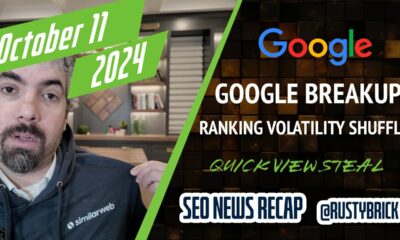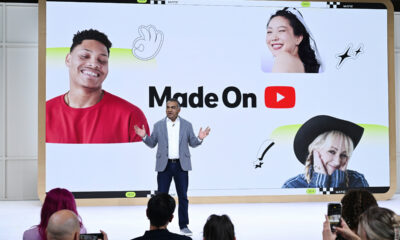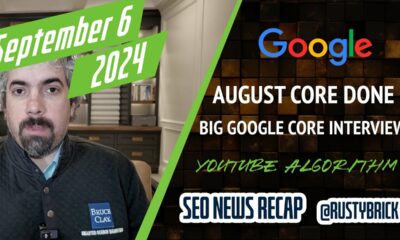SOCIAL
YouTube Moves Away from Original Programming to Focus on Creator Funding Initiatives

YouTube has announced that it will shut down its YouTube Originals program, which at one stage was a key value add for its YouTube Premium service, and a focus in its broader effort to challenge rising video-on-demand rivals like Netflix and Disney+.
As announced by YouTube’s Chief Business Officer Robert Kyncl, YouTube has made the decision to wind down its original programming due to the departure of long-time Originals lead Susanne Daniels, who’s moving on after a raft of changes to her role. Daniels, an industry veteran who has previously worked for The WB, Lifetime and MTV, was initially brought in to lead YouTube’s Originals program in 2015, where she was tasked with developing original series’ for the app.
Daniels’ initial work saw the creation of series like ‘Cobra Kai’ and program partnerships with big-name stars like Ellen DeGeneres, Kevin Hart, Demi Lovato and Katy Perry. Those programs were initially made available to ‘YouTube Red’ subscribers only, who paid $9.99 to access this higher tier of YouTube content.
YouTube Red gained some early traction, but was split into YouTube Premium and YouTube Music in 2018 to provide more subscription options for users. Later in 2018, YouTube also made the strategic decision to make its Premium content available for free, instead of gated for paying subscribers, moving more into line with YouTube’s general ad-supported model for viewing, and tapping into the platform’s main strength in audience and reach.
But over time, YouTube has gradually moved away from original programming.
As explained by Variety, Daniels and her team shifted their focus to unscripted content in three different areas: music, celebrity and creator-focused originals, as well as educational programming. That eventually saw YouTube merging back into its regular content approach, and with over 2 million creators now taking part in the YouTube partner program, forming a much more significant revenue and retention model for the platform, the need for a dedicated originals division has been diminished to the point where YouTube feels that focusing elsewhere will be more beneficial.
As explained by Kyncl:
“Going forward, we will only be funding programs that are part of Black Voices and YouTube Kids funds. We will honor our commitment for already contracted shows in progress and creators who are involved in those shows should expect to hear from us in the coming days.”
Given its regular push to add more users to YouTube Premium, and the regular resistance from most, it makes sense for YouTube to instead focus on other areas, while building its offering for creators is also key in maximizing its audience reach and resonance by tapping into the latest trends and shifts.
Essentially, YouTube doesn’t need to create its own original content, and it’s fairly clear now that it couldn’t compete on this front anyway, given the amount of original properties and programs that Disney, Netflix and Amazon now control.
By re-focusing on creators, YouTube can maximize its appeal, in variance to its real rivals, in Meta and TikTok. And while YouTube would love to dominate all forms of digital media consumption, scripted dramas are clearly not what YouTube users are looking for from the app, at least not in the way that this has become an accepted behavior for other VOD providers.
Given the gradual wind down of its originals, the impact on YouTube will likely be minimal, though you can expect to see some ramp up in focus on creators as a result of the re-allocation of its resources.
Does that mean YouTube will stop pushing YouTube Premium? No, it does not.
Just recently, YouTube launched a new annual payment option for YouTube Premium with the lure of eradicating annoying ads from your YouTube experience. Which is really the only lure for Premium now – no exclusive content, but the ability to get rid of ads.
Which has always seemed like a slightly conflicted offering – “we know our ads are so annoying that some people will pay to shut them off”.
Still, platforms have to make money somehow.



















You must be logged in to post a comment Login